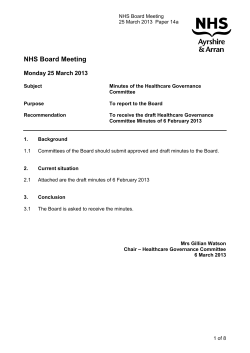
brochure
About Ato ID Ato ID is a manufacturer of disposable SERS substrates ‘Randa’ and ‘Mato’. Company addresses the challenges of affordable and simplified diagnostics as well as threats for safe environment by introducing SERS innovations. Latest developments in SERS (Surface Enhanced Raman Scattering) substrates have expanded our range of advantageous solutions for Raman spectroscopy users. Being 8 times more sensitive than the current gold standard on the market, patented sensors feature competitive price, scalable production and good repeatability. Comparing to other analytical techniques, the biggest advantages of SERS technique lay in single and simultaneous analysis for multiple targets and elimination of expensive reagents or time-consuming sample preparation steps associated with other techniques. Composition of the SERS substrates range of excitation wavelengths like golden ones, The active SERS area is formed using an ultra-short pulse laser on a soda-lime glass substrate. The substrate material is a weak Raman scattered and therefore particularly suitable for SERS (as compared to most crystalline materials). The resulting surface structure features stochastic nanopattern, which meets good resonance characteristics for various excitation wavelengths and adsorbed analyte molecules. A single SERS substrate can be used for various experimental conditions, analytes and results in a very high relative enhancement ratio of the Raman scattering up to 106. Silver-plated SERS works well not only in the IR but also in a visible (blue, green) range as well. Convenient size of the overall substrate (25 x 25 x 1 mm) is approximately a third part of a regular microscope slide, therefore it fits nicely into universal multi-wavelength Raman microscopes and can be used with dedicated compact SERS readers or spectrometers as well. Active area of the standard 'Randa' and 'Mato' SERS substrates is 4 x 4 millimetres by default. Flexible manufacturing technique allows to change (increase or decrease) the size of the SERS area on request. Active areas as large as 10 x 10 mm have been produced specifically for application of electrodes (electro-chemical experiments). All 'Randa' and 'Mato' Raman substrates are vacuum packed in a cleanroom environment. No glue or other chemical substances are used during manufacturing, i.e. for attachment of active area chips to submounts (which is a common feature of counterpart producs. Product specifications Size (mm) 25 x 25 x 1 Active area (mm) 4x4 Sampling method Drop deposition, immersion Recommended excitation wavelength Randa - from 445 nm to NIR Mato - from 600 nm to NIR About Raman spectroscopy Raman spectroscopy is one of the most flexible and accurate technologies for molecular diagnostics. The only drawback - usually low intensity of Raman scattering signal - is eliminated by using a plasmonic SERS substrate, sputter-coated with silver (or gold), which enhances the Raman spectra significantly. Contacts „Ato ID“, UAB Email: info@atoid.com Phone nr: +370 616 83149 Website: www.atoid.com Adress: Kalvariju str. 125, 08221 Vilnius Adenine analysis on `Randa` substrate Overview The `Randa` SERS substrate is made of laser nanopatterned soda-lime glass, coated with silver. The active area is typically 4 by 4 mm and overall substrate dimensions are 25x25x1 mm. Experimental data About the analyte: adenine is one of the two purine the presence of various diseases. Quantitation of nucleobases (the other being guanine) used in forming nucleotides of the nucleic acids.The shape of adenine is complementary to either thyine in DNA or uracil in RNA. Adenine plays a significant role in biological system as it has wide spread effect to coronary and cerebral circulation, energy transduction, enzymatic reactions as cofactors, and even in cell signaling. Abnormal changes of its concentration may indicate adenine is, therefore, critically needed for the studies of a wide variety of biological issues. Sampling method: immersion; SERS substrates we immeresed into water solutions of Adenine and rinsed with deionized water afterwards. Raman system: Renishaw InVia; Laser: 785 nm, 1 mW power; Lens: 5 x magnification; Below we provide experimental data, which is used to evaluate enhancement repeatability of ‘Randa’ substrates. immersion; b) after 2 hours of immersion; c) after 1 hour of immersion. Fig. 2. 0,5 mM adenine SERS spectra. a) after 24 hours of immersion; b) after 2 hours of immersion; c) after 1 hour of immersion. Fig. 3. Adenine SERS spectra intensity dependence on time. Analysis of antibiotics on „Randa“ substrates Overview: The `Randa` SERS substrate is made of laser nano-patterned soda-lime glass, coated with silver. The active area is typically 4 by 4 mm and overall substrate dimensions are 25x25x1 mm. Experimental data About analytes: In this study we investigated the ability of Raman spectroscopy to differentiate between various antibiotics that are in use for cattle treatment. Excess of those chemicals are often found in milk and other dairy products. In figures below, you can find the Raman spectra from pure materials and SERS spectra from low concentrations antibiotics solutions. Sampling method: immersion; SERS substrates were immersed into antibiotics solutions and rinsed with deionized water afterwards. Raman system: Jobin Yvon; Laser: 633 nm, 1 mW power ; Lens: 10 x magnification; Experimental data provided below. Genta Penstrep 500 250 Raman SERS Raman SERS 100 300 1000 Scattering intensity 1458 1274 1166 1000 974 Scattering intensity 150 1600 400 200 200 100 50 0 0 200 400 600 800 1000 1200 Raman shift, cm 1400 1600 1800 -1 Fig. 1. Antibiotic „Penstrep“ Raman and SERS spectra. Active compuonds - penicillin G (sodium salt) and streptomycin sulfate. 200 400 600 800 1000 1200 1400 1600 1800 Raman shift, cm-1 Fig. 2. Antibiotic „Genta“ Raman and SERS spectra. Active compound – gentamycin sulfate. Zepilen Tetroxy SERS 500 Raman SERS 300 1451 1533 1578 400 1278 1321 Scattering intensity 400 200 736 1345 1090 778 666 200 478 Scattering intensity 600 100 0 0 200 400 600 800 1000 1200 1400 1600 1800 Raman shift, cm-1 Fig. 3. Antibiotic „Zepilen“ Raman and SERS spectra. Active compound cephazolin. 200 400 600 800 1000 1200 1400 1600 1800 Raman shift, cm-1 Fig. 4. Antibiotic „Tetroxy“ SERS spectra. Active compound oxytetrac
© Copyright 2025











